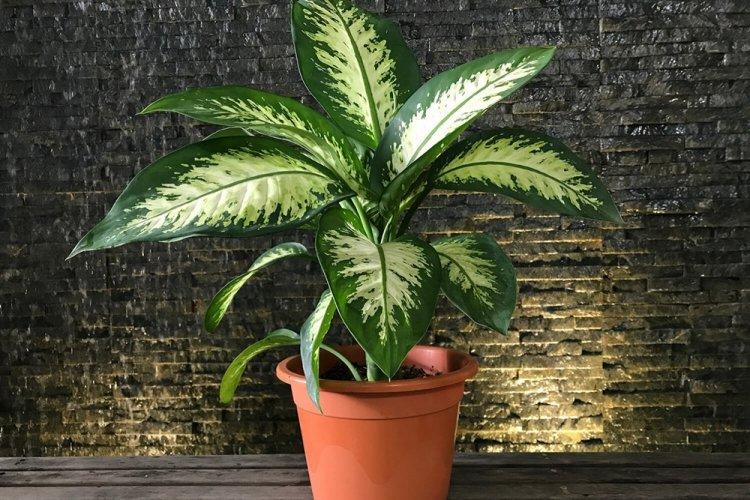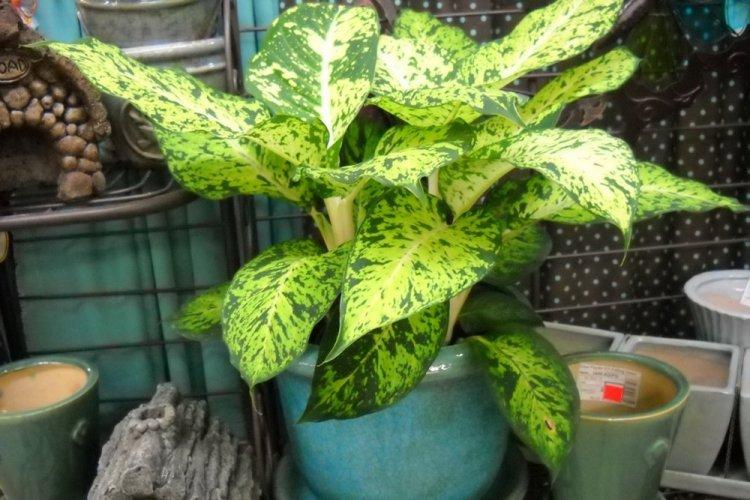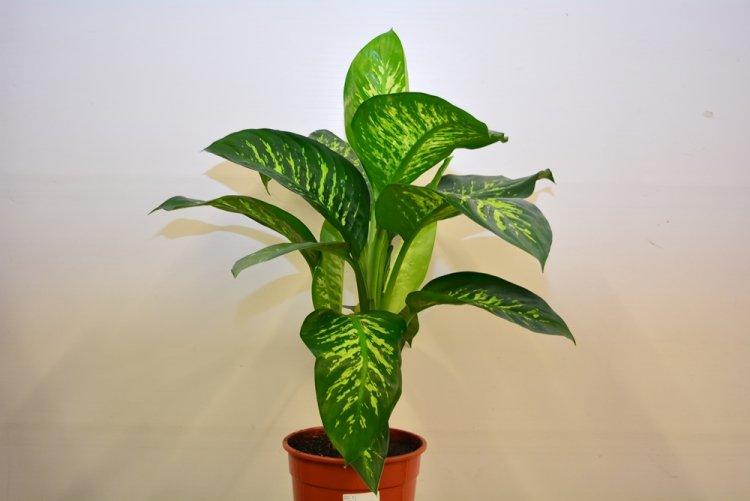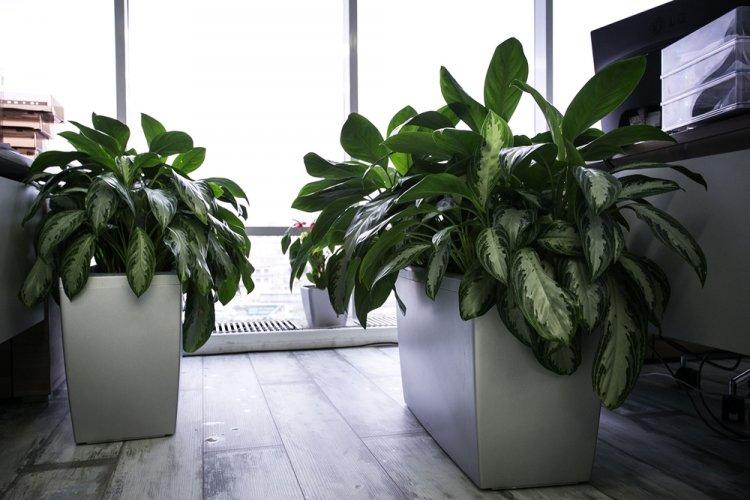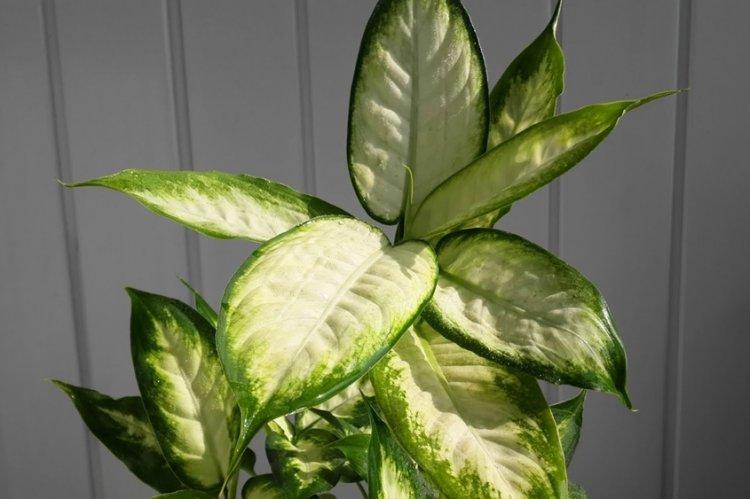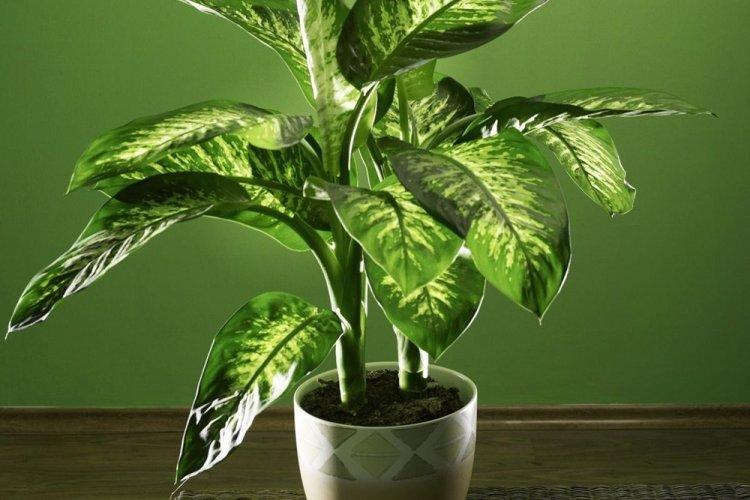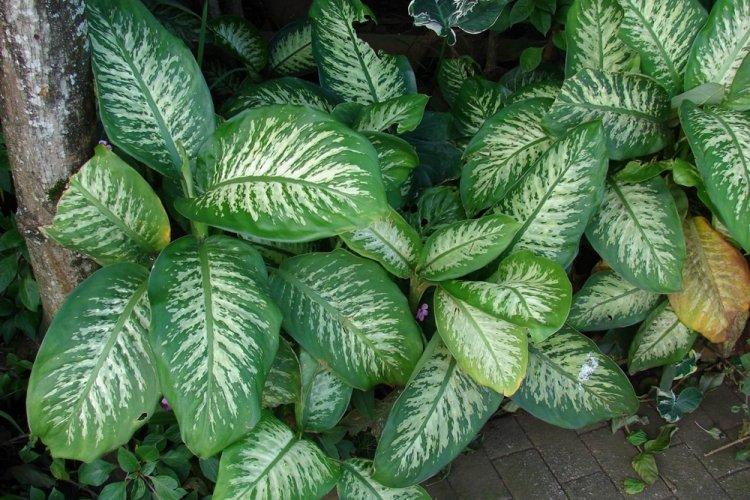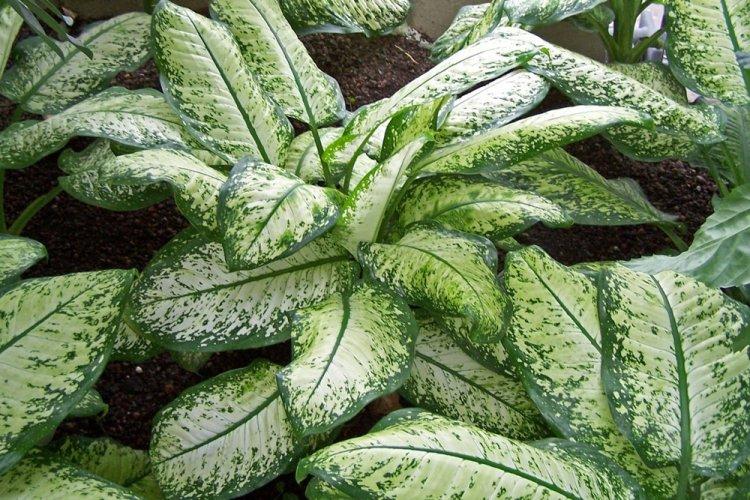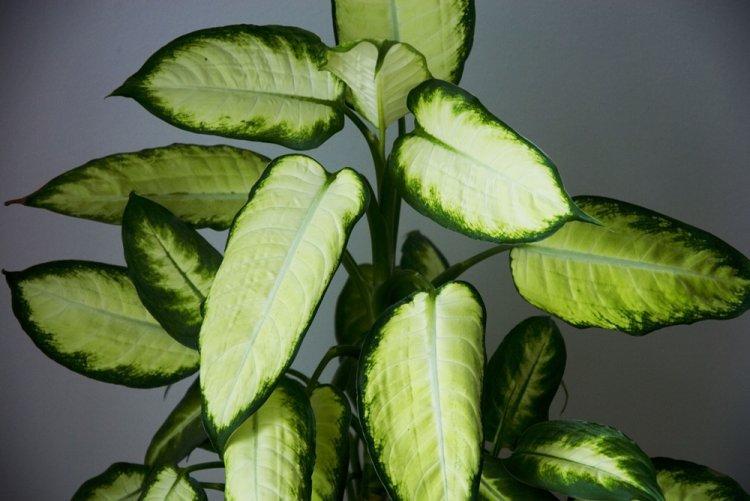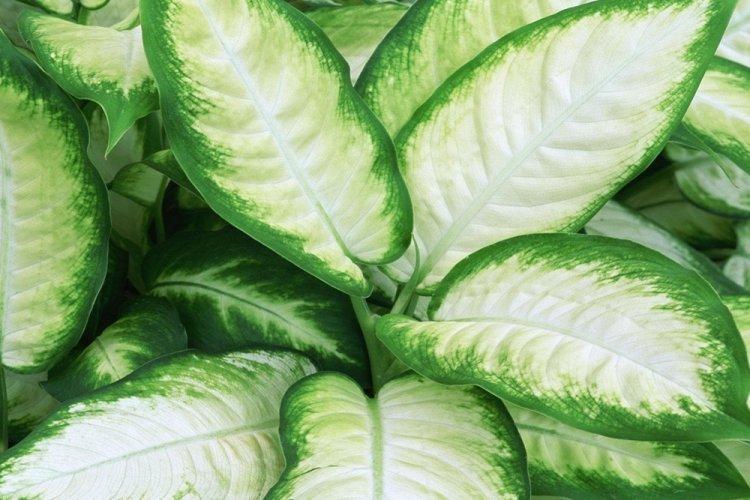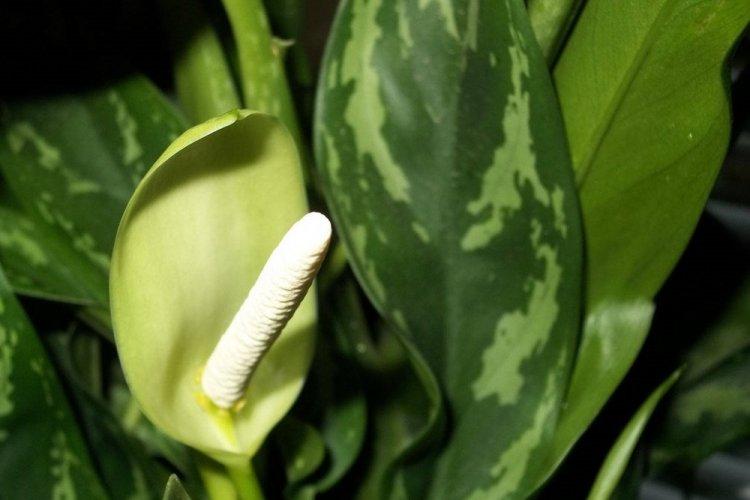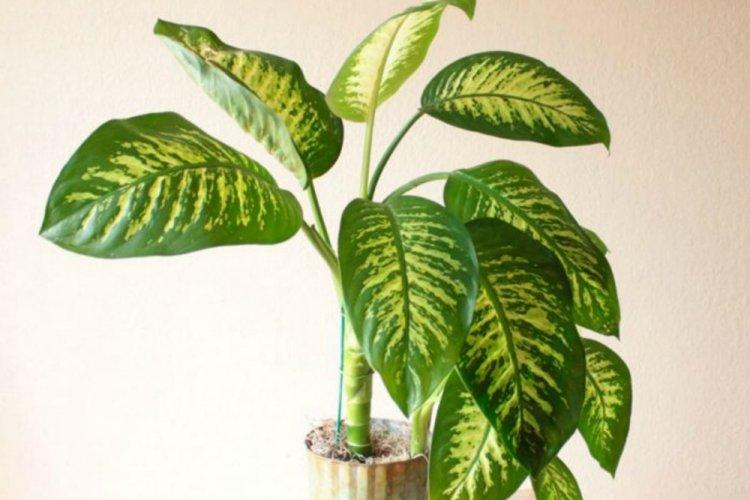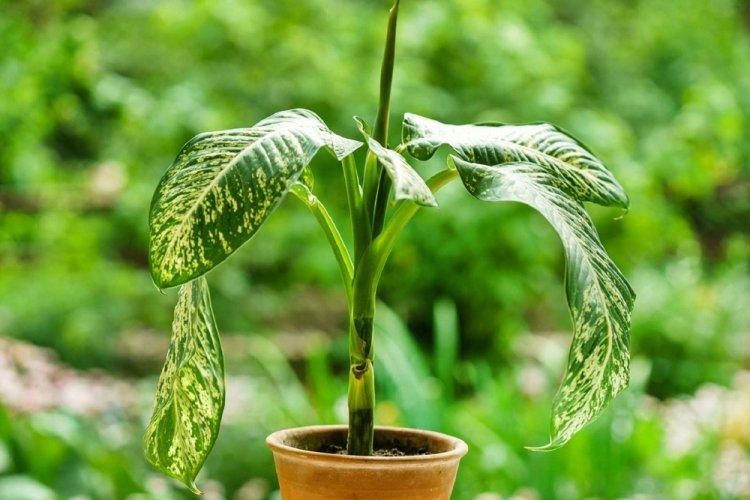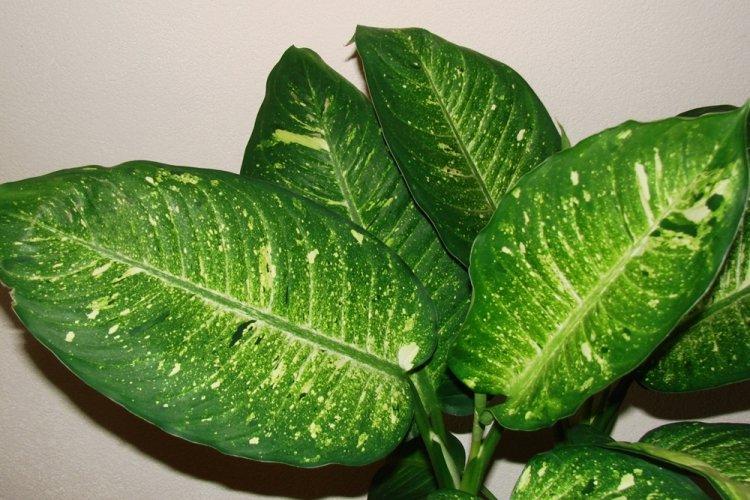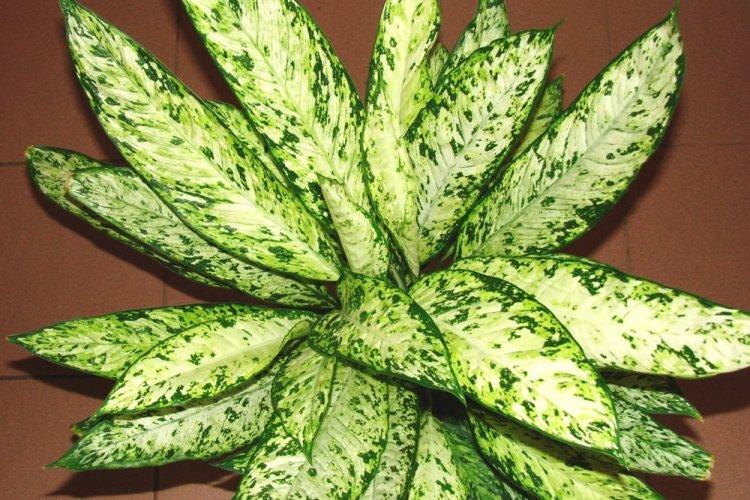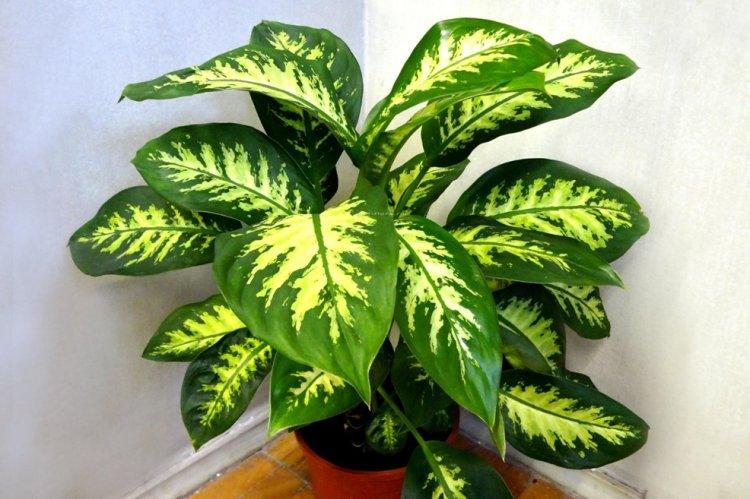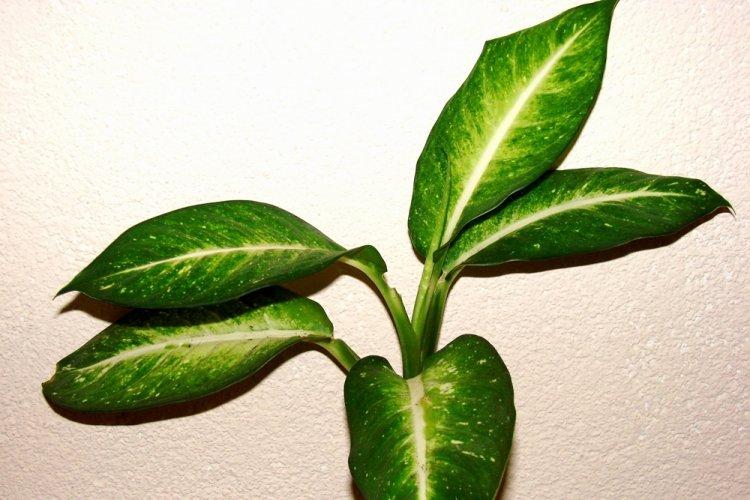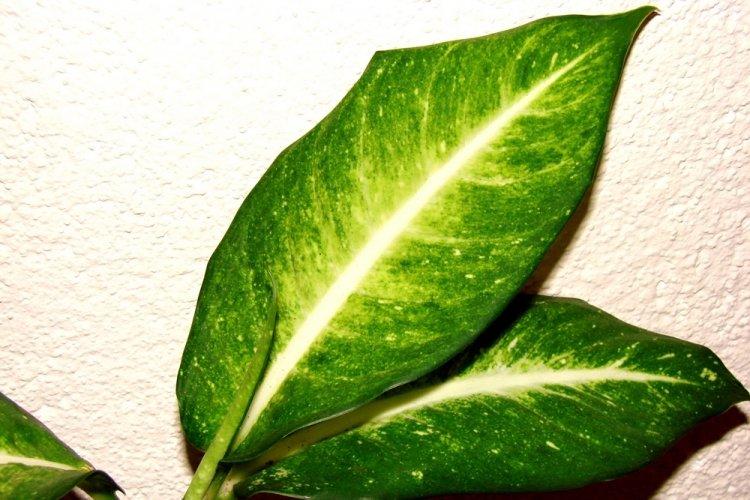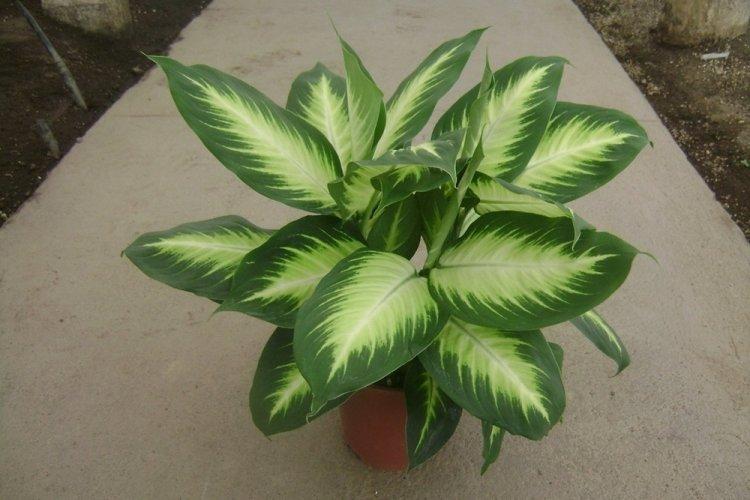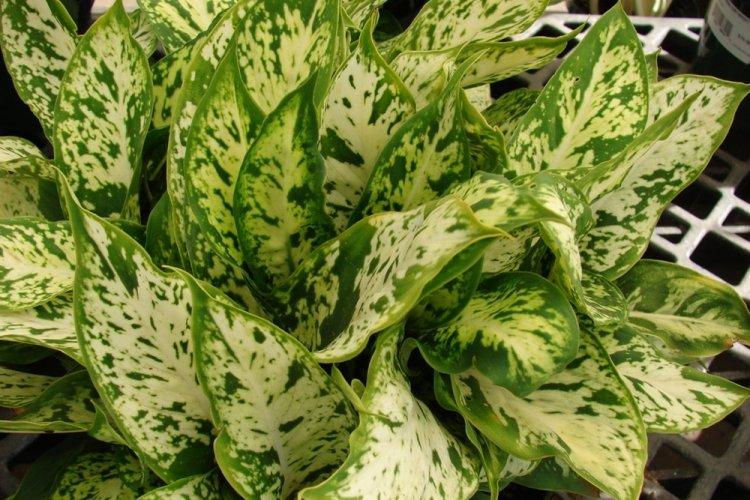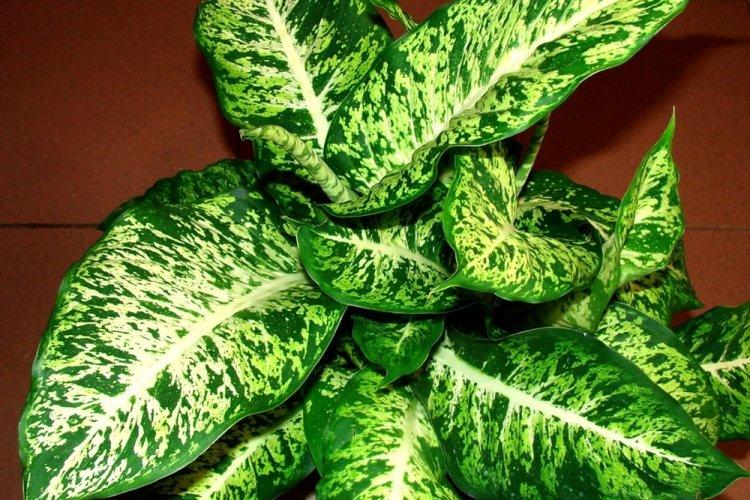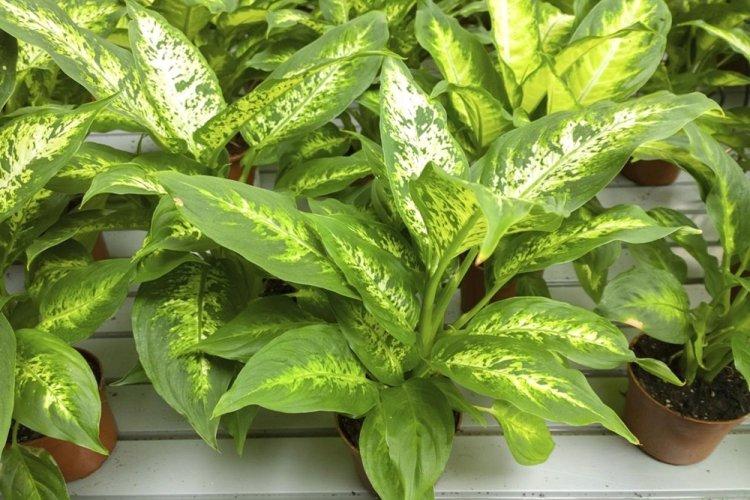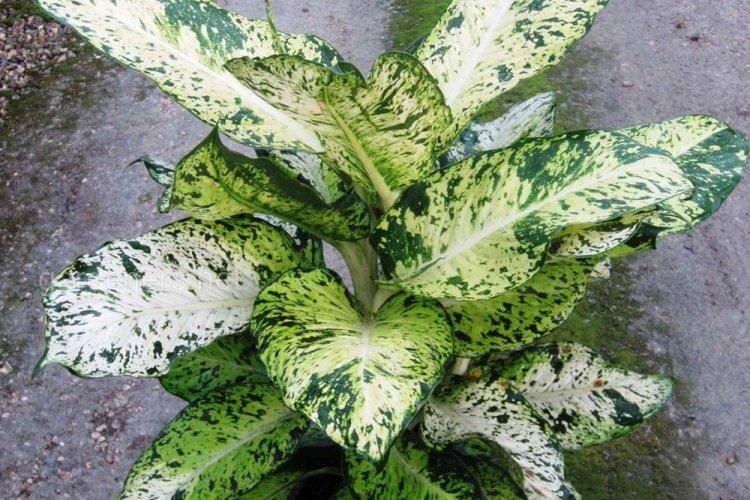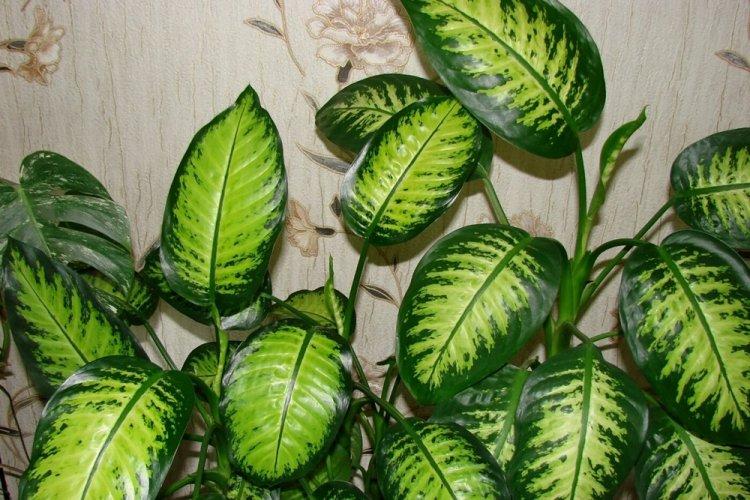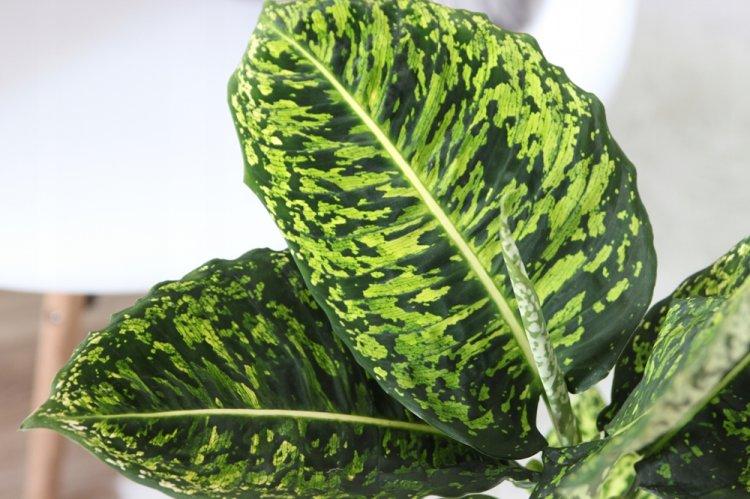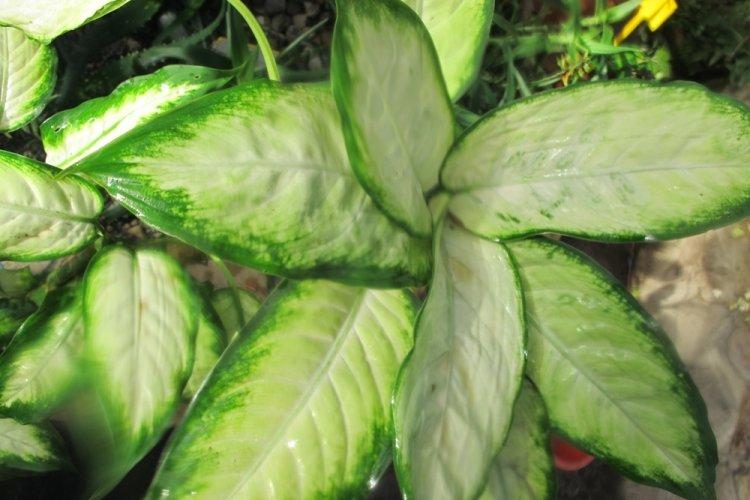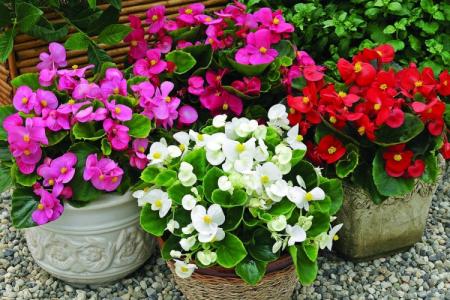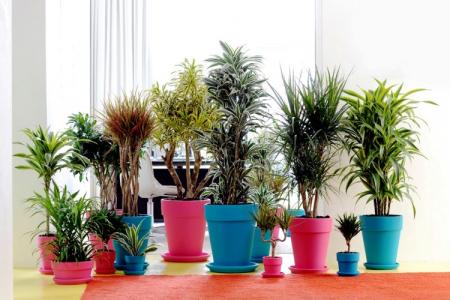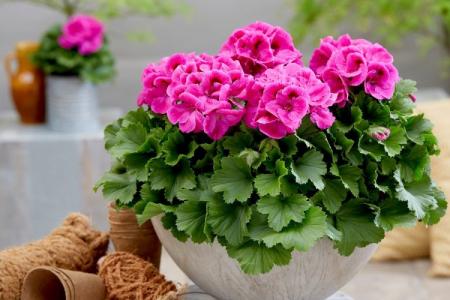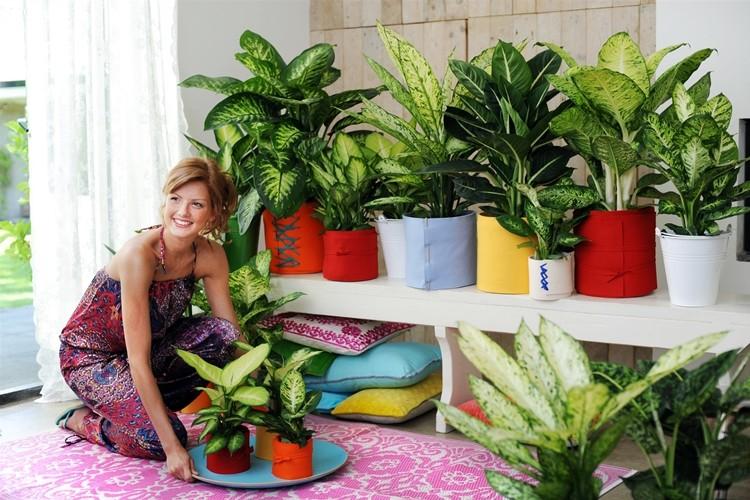
Dieffenbachia is a complex name for a flower well known to everyone. Every amateur gardener must have had a pot with large variegated leaves. And there are a lot of rumors and stereotypes around Dieffenbachia. Let's tell!
general information
Dieffenbachia owes its difficult name to the German botanist Dieffenbach. In nature, it grows in South America, like many other similar species. Outwardly, it resembles rather not a shrub, but a small tree with a full-fledged trunk, from which large leaves densely diverge.
Dieffenbachia has one interesting growth feature - it grows only from above. Therefore, gradually the lower leaves will die off, and the stem becomes more and more like a bare trunk. In this form, the flower can even stretch for several meters. But this does not happen often, because for all its visual impressiveness, it is very fragile.
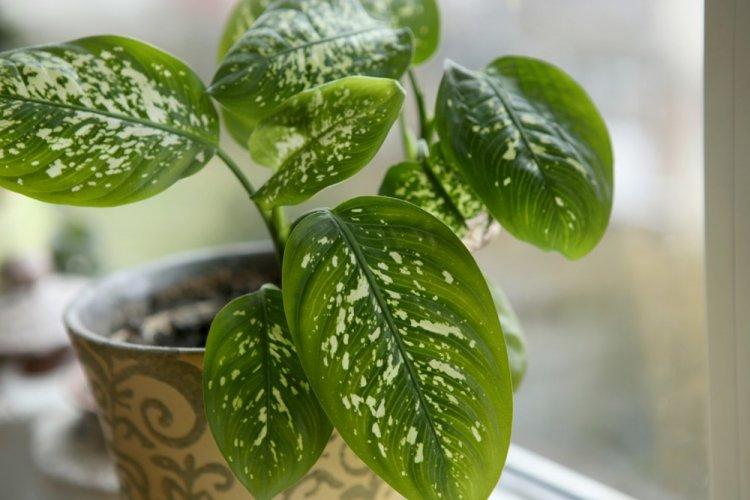
In fact, Dieffenbachia is a flowering plant, but this rarely happens at home. To do this, you really have to work hard to recreate the right conditions. In this case, the flowers bloom every year, and thanks to artificial pollination, they can even bear fruit.
Keep in mind that the leaves and stem of dieffenbachia have a rather poisonous juice. It will not harm you in any way in everyday life, but if it gets on the mucous membrane, it can reach a serious burn. Therefore, it is best not to keep the flowerpot where small children or pets can reach it.
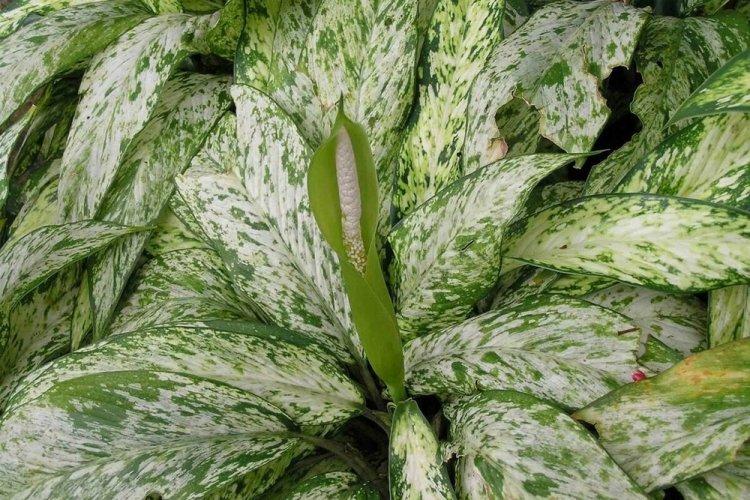
Types of dieffenbachia
Different varieties of dieffenbachia are very similar to each other and differ most often in the pattern on the leaves. Therefore, you can safely start several species at once if you have long dreamed of a small home jungle.
Variegated Dieffenbachia
The most famous and popular homemade variety attracts with its scope and impressive size. The variegated Dieffenbachia easily grows up to two meters and looks like a real corner of the tropical jungle was brought into the room. Dark leaves about 40-45 cm long cover whitish intermittent patterns - as if brush strokes.
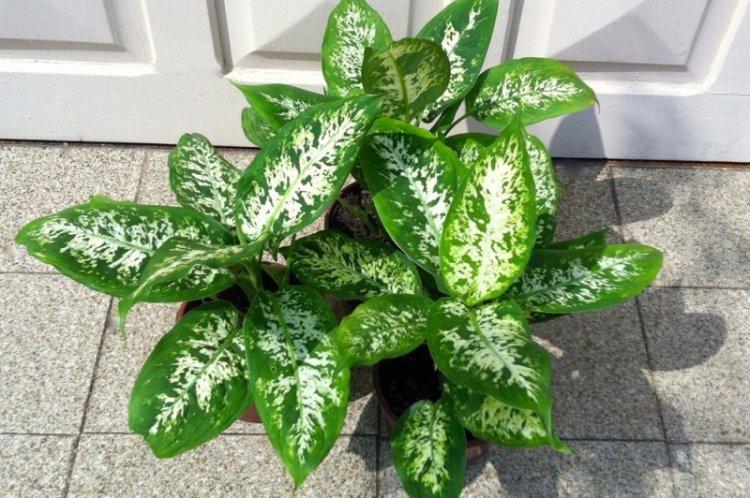
Adorable dieffenbachia
The name of the variety perfectly reflects its essence - it is a very beautiful, neat and completely unpretentious dieffenbachia. She easily tolerates a lack of moisture, winter cold snap and dryness with temperature changes due to heating. The tree grows up to 1.5 meters in height, and oval leaves with light veins stretch up to 60 cm.
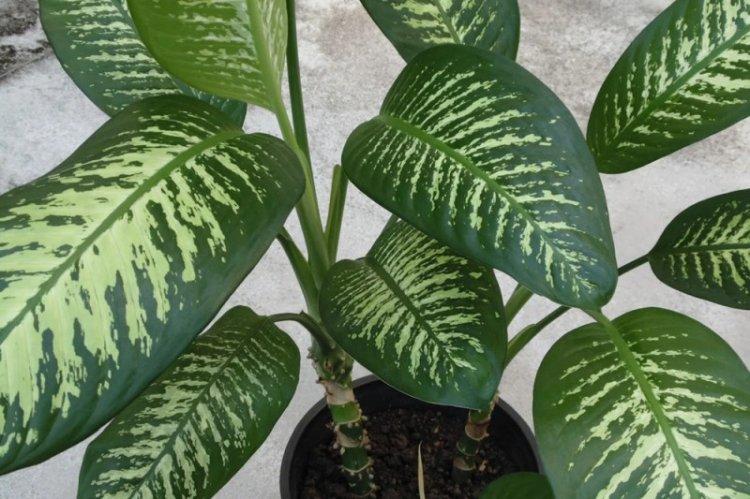
Large-leaved dieffenbachia
This is a one-color species, rare for variegated Dieffenbachia, without patterns on the leaves. On the ovoid plates, only a thickened central vein is clearly distinguished. The flower grows on average up to a meter - very convenient for the home.
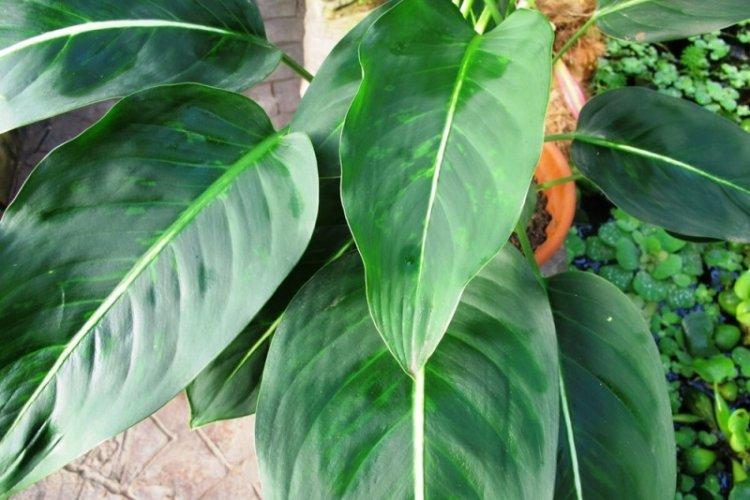
Spotted dieffenbachia
Along with variegated, spotted dieffenbachia is a favorite of home growers. It is much lower (up to a meter), but due to this it looks more magnificent and thicker. The shape of the leaves is more elongated, up to 50 cm, and from above they are covered with a chaotic asymmetrical whitish ornament.

Magnificent Dieffenbachia
This variety was also nicknamed royal for how impressive and bright the large leaves look. This is a variegated look and almost white veins, framed by dark green edges, stand out against the background. White dots and spots are also scattered along the petioles, which complement the picture.

Dieffenbachia Leopold
A rare variety, familiar mainly only to experienced flower growers, but this does not make it less spectacular. The curiosity arrived straight from the jungle of Costa Rica and is considered a real exotic in our latitudes. It has a very short and thick trunk and large, long oval leaves with a white heart that gradually fades through yellow to green.
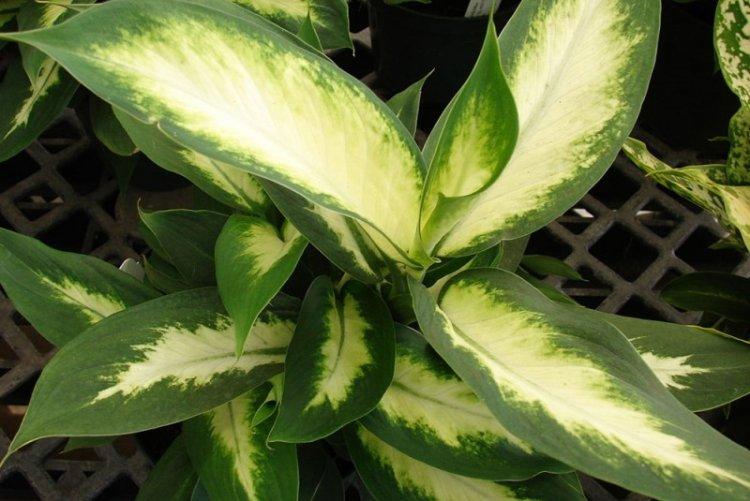
Dieffenbachia Seguin
The variety is distinguished by very wide leaves with large light yellow-green brush strokes.Dieffenbachia Seguin is especially appreciated by breeders, because it became the progenitor of so many ornamental varieties.
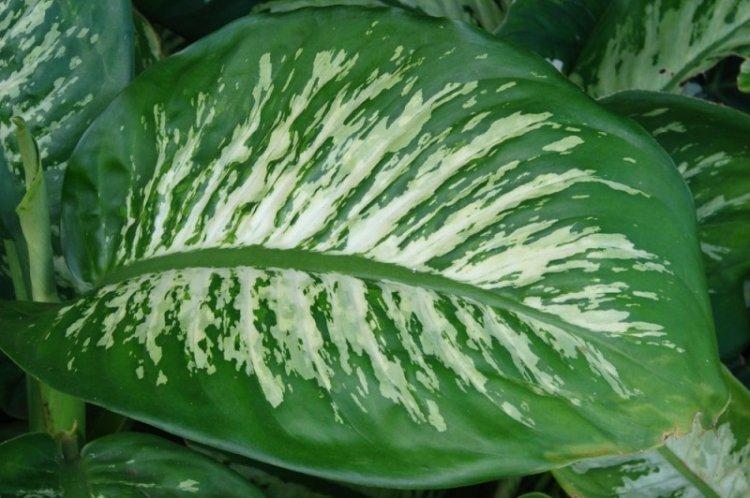
Dieffenbachia Bause
Against the background of large ornamental dieffenbachia, Bause is a fairly compact variety. The leaves grow only up to 35-40 cm, but at the same time flower growers appreciate their beauty. Dark and white spots are scattered against the monochrome background, creating a whimsical impressionist painting.
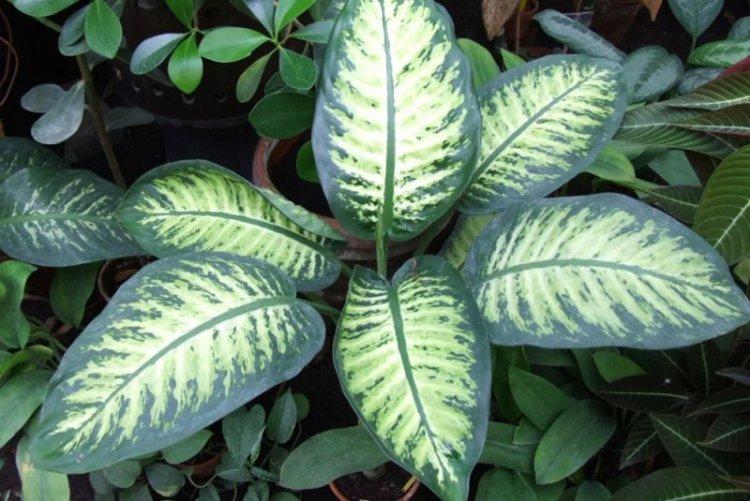
Dieffenbachia care
Like all indigenous people of the rainforest, Dieffenbachia has only two requirements. She definitely needs warmth and as much moisture as possible - then she will not give you any trouble. This is the case when it is almost impossible to overfill the plant.
Temperature
The room should have a stable high temperature of 18-20 degrees. If the thermometer drops below 16-17, the plant falls into autumn-winter suspended animation. Make sure that the flowerpot does not fall into drafts and in no case open the window near it in the cold season.
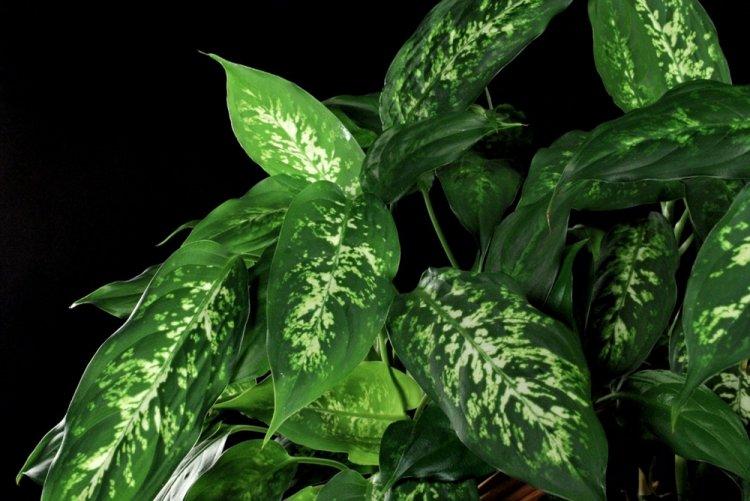
The soil
The soil mixture for tropical deciduous plants is used about the same - it is sod and leafy land, peat and sand. Drainage is required - fine gravel, expanded clay or river sand. Charcoal with its beneficial antiseptic properties or even brick chips will do.
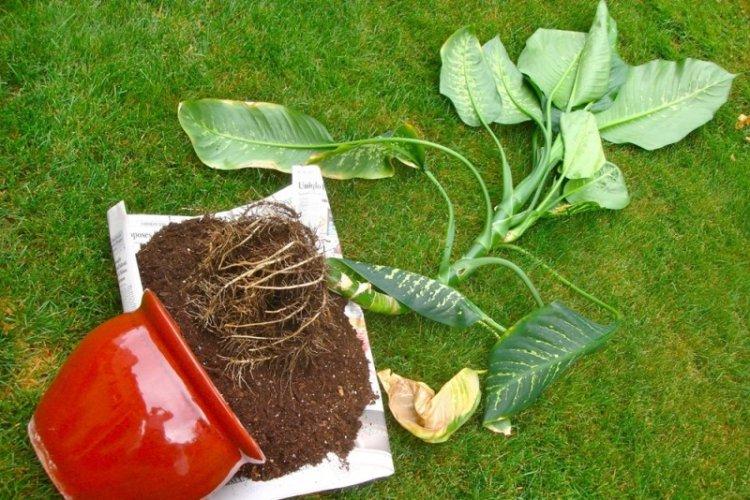
Lighting
Dieffenbachia came to us practically from the jungle, and two nuances follow from this. She needs a lot, a lot of sun, but at the same time she does not tolerate direct rays well. Because in their natural habitat, sensitive leaves tend to shade taller plants. When dieffenbachia lacks light, it does not stop growing, but becomes more fragile and thinner.
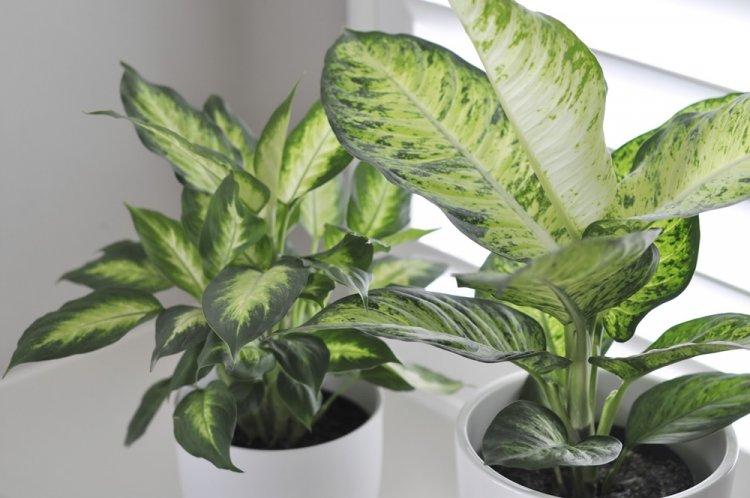
Watering
During the season, you need to water dieffenbachia often, a lot and regularly, but in winter watering is reduced significantly. The criterion is very simple - the soil must have time to dry out at least a couple of centimeters deep. This can be determined with an ordinary wooden stick or even your finger.
There should always be high humidity in the room, and large dieffenbachia leaves should be regularly sprayed and wiped with a damp sponge. And this procedure remains the same in winter, because the air around is constantly dry due to the battery and the heater. As soon as you see that the leaves begin to dry from the edges - know that the flower does not have enough moisture.
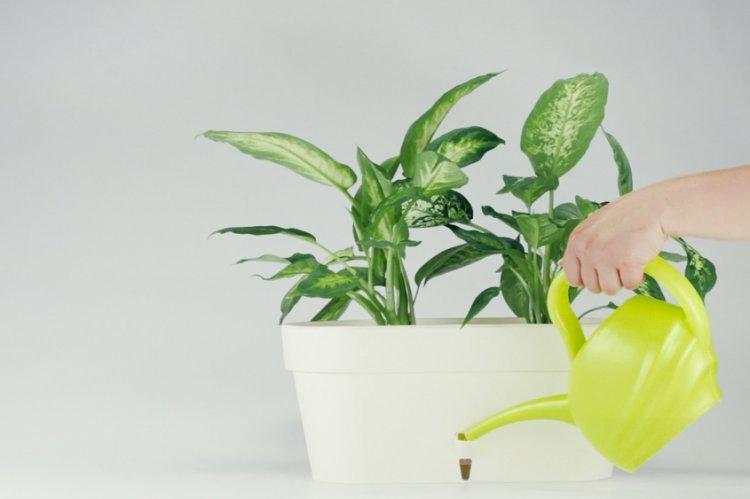
Fertilizers and feeding
In the phase of active growth in the warm season, dieffenbachia will have to be fed about once every two weeks. But on the other hand, the difficulties end there, because any complex fertilizer or even organic matter with a high percentage of nitrogen is suitable for you.
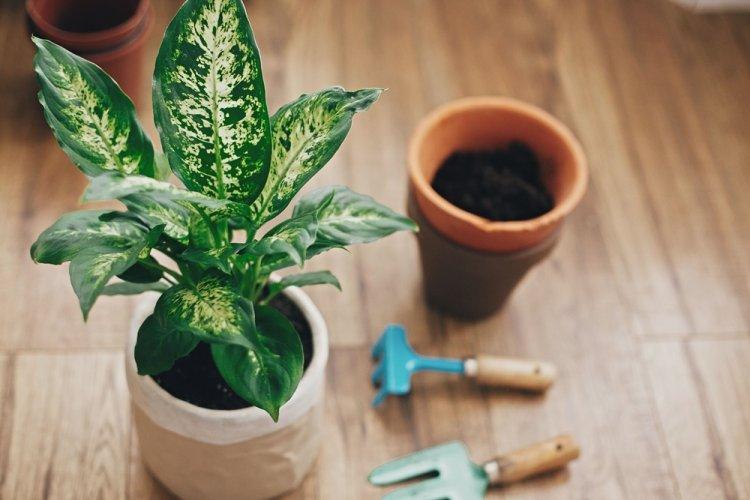
Pruning
To prevent dieffenbachia from stretching into a palm tree or panicle, it must be periodically renewed. When the lower leaves are dead, the upper part should be cut off and rooted in the pot. The same happens if in nature a tree breaks under its own weight - this is a natural life cycle for it.
If you are the lucky one whose Dieffenbachia bloomed in all its glory, be sure to cut the flowers after drying. Otherwise, an ovary for seeds will begin to form, and a lot of energy is spent on this plant. It will be difficult for you to restore it at home.
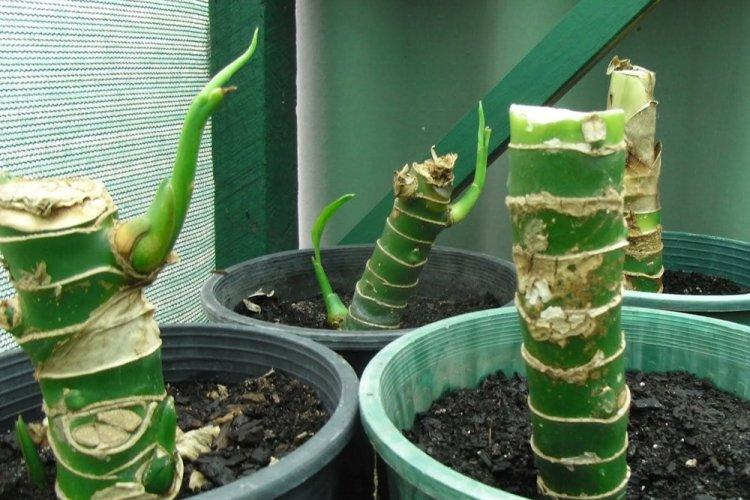
Transplant and reproduction
Unlike relatives that propagate by division, dieffenbachia is easiest to propagate with apical cuttings. This is as close as possible to its natural cycle, so there will be no problems with rooting the top. For the best results, you can use special additives for the development of the root system.
If you root the cutting in a container of water, it can be replanted when the roots grow up to 3 centimeters. If you use a sand tray, be sure to use a weak solution of mineral fertilizers. When you just transplant dieffenbachia into a larger pot, do it together with the substrate so as not to damage the root.
An unusual way of reproduction is by pieces of the stem 10-20 cm long.They need to be treated with charcoal, dried and pressed about half into the substrate. This is a very slow, but very interesting method, observation of which can take six months.
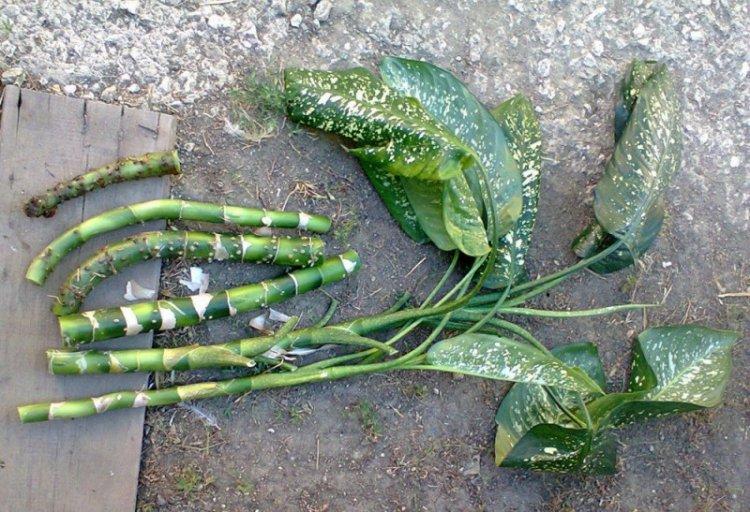
Pest and disease control
Houseplants rarely suffer from pests, especially if you regularly wash the leaves. But nevertheless, it is impossible to insure one hundred percent against a spider mite or scale insect. In this case, good old insecticides and ordinary soap solution for washing will come to your aid.
Most often, dieffenbachia owners are faced with rot or fungus. They arise from an excess of moisture in the soil and too low temperature. Then you need to dig up the plant, remove all damaged roots, process the sections with charcoal and transplant the flower into new soil, after spilling it with a weak solution of potassium permanganate.
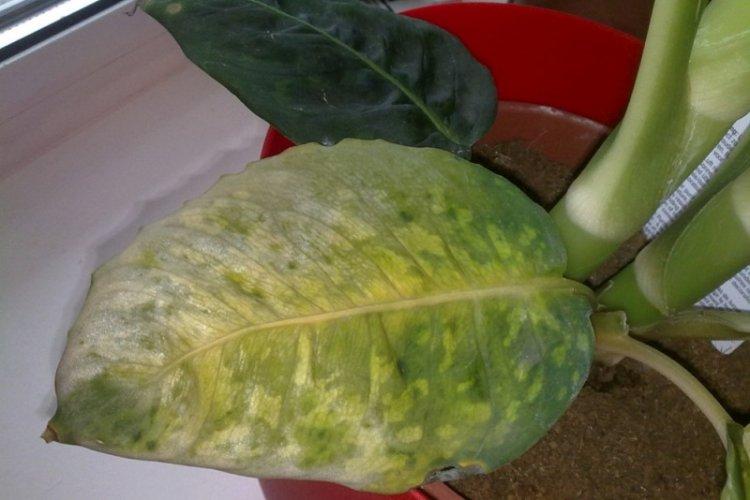
Dieffenbachia - photo
Dieffenbachia with its spectacular large leaves is always good: young and old, large and small. And we are ready to prove it in practice with our photo selection!
